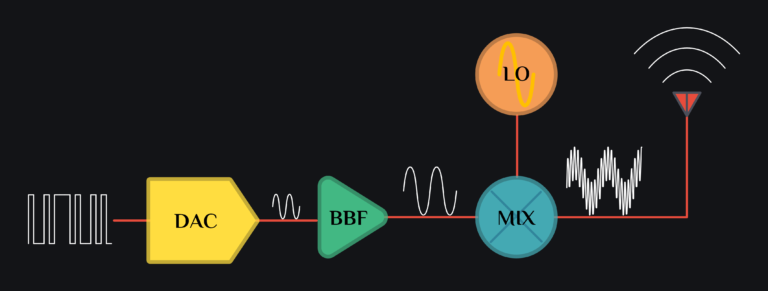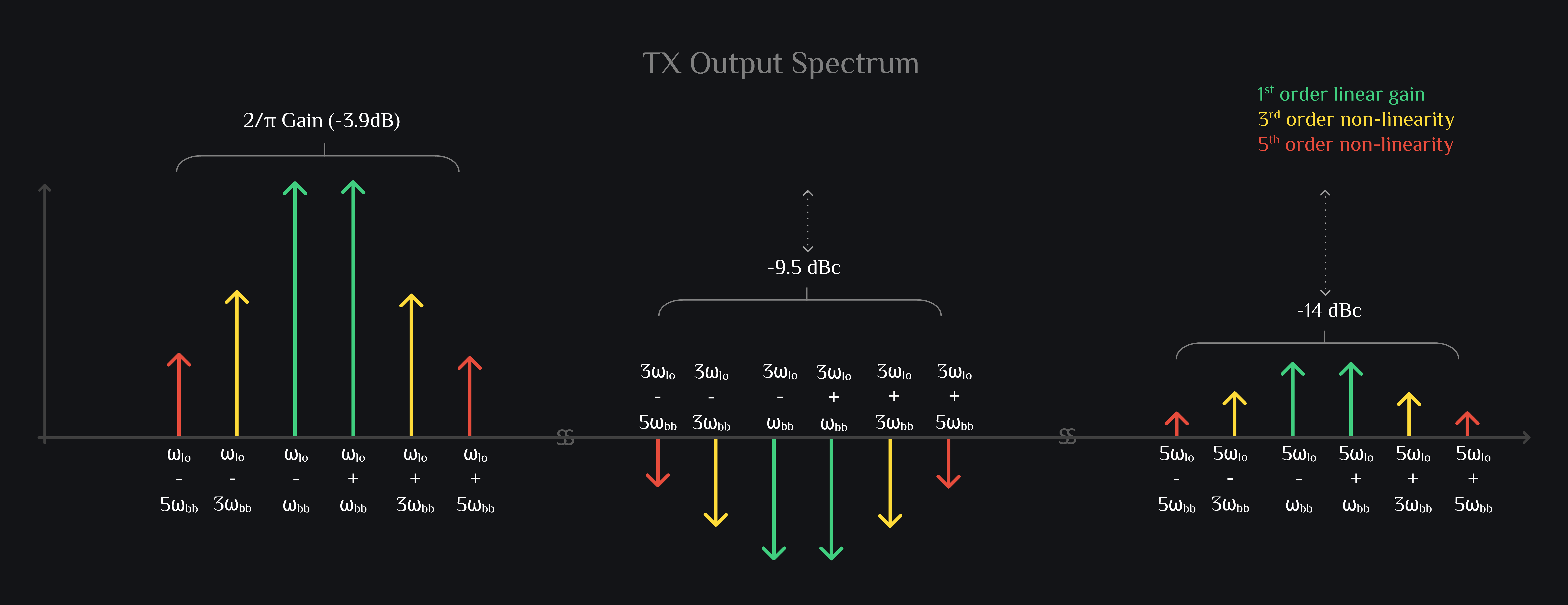TX Mixer
Consider a typical TX with DAC (digital to analog converter), BBF (baseband filter and/or amplifier) and MIX (mixer) as shown in image below.

Say DAC outputs a sinusoid signal. Let’s do some math to see what happens to the signal when it makes it to the TX output.
Consider an LO as a square wave toggling between +/- 1. Even if your LO signal is sinusoid, the mixer itself would/should hard switch (means switches would turn fully ON or OFF), therefore overall behavior would be as if a an ON-OFF signal (square wave) was given as LO. Developing only up to 5th harmonic of square wave, LO signals can be written as:
We can write mixer output as:

Let’s take a look at the time domain as well:

Green colored signal is what you get from your mixer output. What is this? It does not look like a nice clean upconverted sinusoid at all, so no wonder our spectrum was so polluted. Do not worry. We can work on cleaning this up. Go ahead and start from IQ mixers.
Author: RFInsights
Date Published: 22 Dec 2022
Last Edit: 02 Feb 2023